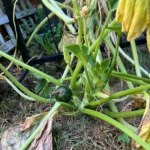23 August 2023
Many years after the famous mummy Oetzi was discovered in the Italian Alps, scientists have studied his DNA again.
Researchers found that the ancient hunter mostly had ancestors who were farmers in an area that is in present day Turkey. Oetzi had less hair on his head and darker skin than scientists had first thought, says the study.
The study appeared recently in the publication Cell Genomics.

FILE - This photo provided by The South Tyrol Museum of Archaeology shows "Oetzi the Iceman," one of the oldest human glacier mummies. (Marco Samadelli, Gregor Staschitz/South Tyrol Museum of Archaeology/EURAC via AP)
Oetzi, who lived more than 5,000 years ago, was frozen into the ice after someone shot him with an arrow. In 1991, German visitors to the area found his body, along with some of his clothing and tools.
Oetzi's belongings included a copper ax, a longbow and a bearskin hat. The remains are housed at the South Tyrol Museum of Archaeology in Bolzano, Italy.
Researchers published a study of Oetzi's genetic material, or genome, in 2012. However, the study of ancient DNA improved in the years that followed.
So, scientists decided to investigate the mummy's genes again, said study writer Johannes Krause of Germany's Max Planck Institute for Evolutionary Anthropology. Researchers used DNA taken from Oetzi's hip bone.
The new genome is "providing deeper insights into the history of this mummy," said Andreas Keller of Germany's Saarland University. Keller worked on the earlier study but was not involved with the latest.
Based on the new genome, Oetzi's appearance when he died around age 45 was much like the mummy looks today. It is dark and does not have much hair on it, said study writer Albert Zink of the Institute for Mummy Studies at Eurac Research in Italy. Scientists previously thought the iceman was lighter-skinned and hairier in life, but that his mummified body had changed over time.
His genome also showed he had an increased chance of the diseases obesity and diabetes, the researchers reported.
Oetzi's ancestry suggests that he lived among an isolated population in the Alps, Zink said. Most Europeans today have a mix of genes from three groups: farmers from Anatolia, hunter-gatherers from the west and herders from the east. However, 92 percent of Oetzi's ancestry was from just the Anatolian farmers.
I'm John Russell.
Maddie Burakoff reported on this story for the Associated Press. John Russell adapted it for VOA Learning English.
______
Words in This Story
mummy – n. a dead body of a person or animal that has been preserved
arrow – n. a weapon that is made to be shot from a bow and is usually a stick with a sharp point on one end and feathers at the other
ax – n. a tool that has a heavy metal blade and a long handle
longbow – n. a large wooden weapon that shot arrows and was used for hunting or fighting
insight – n. the ability to understand people and situations
isolated – adj. far away from others; remote
herder – n. a person who manages, breeds, or tends to livestock












